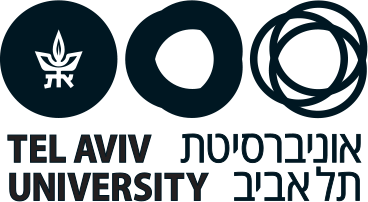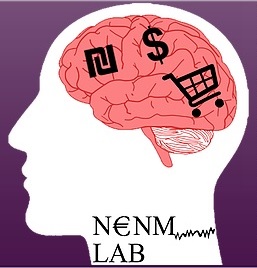Examining the effects different basic visual attributes have on subjects’ choices and on their neural representation of value.
The main purpose of this research topic is to try and relate our understanding of the basic principles of visual perception and how the visual system operates with basic principles of value-based decision-making. Our main questions in this topic are, if and to what extent could we find value modulation in brain areas that are known to represent sensory information. We also examine if there is evidence for a “value tag” in sensory areas and whether this “value tag” is a bottom-up or a top-down modulation. Shiran’s experiment: A collaboration with Dr. Tom Schonberg. In the current project we test the contribution of low-level visual features on three items types: fractal art images, faces, and snack food items. Importantly, we test the role of the low-level visual features on preferences after controlling for higher level configural features of faces and market features of snacks like weight and calories, respectively. Using multiple item types and multiple measurement methods we aim to construct a unifying framework regarding the contribution of low-level features to value-based decision making.
Examining the Influence of Regulating the Right Inferior Frontal Gyrus, Using EEG Finger-Print Neurofeedback, on Risk Preferences
A collaboration with Prof. Talma Hendler. Previous studies have shown that the level of risk preferences is correlated and influenced by the activity of the right Inferior Frontal gyrus (rIFG). The goal of the present study is to modulate risk preferences non-invasively by upregulating cortical excitability over the rIFG in healthy adults using Neurofeedback (NF). We use a novel fMRI enriched EEG model of the rIFG that enable the prediction of its fMRI-BOLD activity using only EEG.
Predicting consumers’ preferences using neural and physiological measurements, with machine & deep learning models.
In many cases, relying only on consumers’ verbal reports or their responses to questionnaires for evaluation of their preferences can result in biased, inaccurate or inconclusive results. Therefore, we employ various neural and physiological measurements (such as fMRI, EEG, GSR, EMG and eye-tracking) to acquire information about consumer’s preferences that is unobtainable through conventional methods. Mainly, we obtain neural and physiological data while consumers evaluate various related marketing campaigns (such as TV ads, internet pages, pictures, etc.), extract multiple measurements from the recordings, and try to predict consumers’ future choices and behavior using diverse machine & deep learning approaches. We aspire to increase the predictive power currently attainable with standard non-physiological measures and to identify consumers’ true preferences — namely the choice they will make at the time of their purchasing decision.
The Neural Mechanism of Choice Inconsistency
Revealed preference theory provides analytic tools to measure the inconsistency embedded in a decision-maker’s choices, thus their deviation from a rational benchmark. We apply this theory together with neuroimaging techniques to trace the neural mechanisms that generate inconsistent behavior. We develop a novel index that measures the severity of inconsistency for each choice, and directly trace its neural correlates using fMRI. In addition, we attemp to develop a computational model of choice suggesting that variability in the computation of value can explain our findings and is therefore one possible source of inconsistent choice behavior.
The Neural Building Blocks of Rational Choice: Examining Inconsistent Economic Behavior in a Simple Nervous System
A collaboration with Prof. Oded Rechavi and Dr. Kenway Louie. Rational choice theory in economics assumes optimality indecision-making. One of the basic axioms of economic rationality is "Independence of Irrelevant Alternatives" (IIA), according to which a preference ratio between two options should be unaffected by introducing additional alternatives to the choice set. Violations of IIA have been demonstrated in both humans and in various animals and could therefore stem from common neuronal constraints. In order to examine this notion, we use the nematode Caenorhabditis elegans (C.elegans), an animal with only 302 neurons and a fully mapped connectome, to examine when and why economic rationality and violations of rationality occur. We developed tests for IIA violations by characterizing the choices that C. elegans make in olfactory chemotaxis assays. In each assay, we expose the worm to different odors that activate only specific neurons, thus involving in the choice process only defined neuronal networks, and test whether particular neuronal architectures are prone to producing irrational choices.
Using facial EMG to detect deception
A collaboration with Prof. Yael Hanein’s lab. People’s ability to detect lies during social interactions is at chance level, and even commonly used techniques, like the polygraph, suffer from poor performance and reliability. It was longtime hypothesized that tiny facial expressions reveal when a person is lying; in this study, we use novel electromyography electrodes to detect the facial expressions associated with telling (successful or unsuccessful) lies. By combining common signal analyses with state-of-the-art machine learning algorithms, we can outperform widely-used lie-detection techniques such as the polygraph. We also examine features of speech that can contribute to lie detection.
Studying Internal Motivations for (Dis)honesty
Why do some people refrain from lying, even when there is no risk of being caught? We design a modified signaling task to study this question, in which subjects choose between being truthful and win small amounts of money or deceitful towards another person and get higher profits. We find that while some people focus on their own personal gain (and avoid lying when potential gains are low), others are more affected by the consequences of their action on their partner (avoid lying when the partner stands to lose large amount of money). We are also examining how activity of different brain regions can explain such individual differences, as well as the general neural mechanism underlying the decision-making process.

